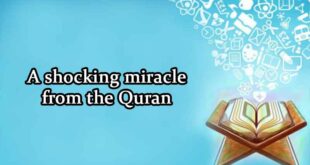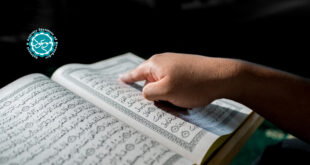Then he began to formulate policies on running the society. When one takes a look and sees that the Holy Prophet (S) moved forward wisely step by step, one realizes what brilliant ideas and calculations were behind that firm determination. Naturally, this is not possible except through divine revelations. Today when people study the events that took place during those ten years, they do not understand anything.
When one studies each event by separating it from the others, one does not understand anything. One should understand how these events were interrelated and how all these things were carried out with wisdom and with accurate calculation.
The first important thing that that the Holy Prophet (S) did was creating unity. Not all the people of Medina became Muslims. The majority of them became Muslims and a few of them did not become Muslims. Besides, three important Jewish tribes Banu Qaynuqa, Banu Nadir and Banu Qurayza were living in Medina. They were living in their own fortifications which were attached to Medina.
They had moved to Medina 100, 200 years earlier. It is a long story why they had moved to Medina. When the Holy Prophet (S) entered Medina, these Jewish tribes were known for these two, three things: one was that the main sources of wealth such as the best farms, the best businesses and the most profitable industries such as gold-smithery and other such things were in the hands of these tribes. The majority of the people of Medina would go to these tribes when they needed something.
They would borrow money from them and pay back the money with interest. That is to say, financially speaking, everything was in the hands of the Jews. Another thing was that these Jews had cultural superiority over the people of Medina because they had a scripture and they were familiar with different religious concepts, concepts which were foreign to the minds of the semi-barbarous people of Medina. Therefore, they had intellectual domination over the people of Medina.
In modern terms, the Jews would be considered to be the intellectual class. Therefore, they used to humiliate and ridicule the people of Medina. Of course, whenever they felt that they were in danger and whenever it was necessary, they showed humility.
However, they were superior to the people of Medina. The third characteristic is that they were in touch with distant places. That is to say, they did not confine themselves to Medina. The Jews were a reality in Medina. Therefore, the Holy Prophet (S) had to take them into consideration. He prepared a multilateral treaty. When he entered Medina, it became clear that the leadership of this society belonged to the Holy Prophet (S).
This happened without any formal agreements. He did not ask the people for anything and the people did not have any negotiations about this leadership. That is to say, the great character of the Holy Prophet (S) naturally made everybody obey him. It became clear that he was the leader and what he said was the pivot. The Holy Prophet (S) drew up a treaty which was accepted by everybody. This treaty was about social interactions, business transactions, conflicts, blood money and the relations between the Holy Prophet (S) and his opponents, the Jews and other non-Muslims. All these things were written down and recorded with all the details. The details have perhaps taken up two, three pages in great old history books.
The next important thing that he did was strengthening the spirit of brotherhood. Aristocracy, the kind of prejudice which was based on superstition, tribal arrogance and separation of different groups of people from one another were the most important disasters for biased and ignorant Arab societies of that time. By strengthening the spirit of brotherhood, the Holy Prophet (S) trampled on these things.
He created the spirit of brotherhood between the head of such and such a tribe and such a lower-class or middle-class individual. He said to them that they were brothers and they most willingly accepted this brotherhood. He established equality between the nobility or outstanding personalities and slaves who had just become Muslims and who had just been freed.
By doing this, he removed all obstacles in the way of social unity. When they wanted to choose a muezzin for the mosque, there were many handsome individuals with a pleasant voice. There were many outstanding and knowledgeable personalities. But among all these people, the Holy Prophet (S) chose Bilal al-Habashi. Beauty, good voice and family reputation were not an issue. Only Islam, faith, Jihad in the way of God and self-sacrifice were important. Notice how he practically specified the values. His actions and his behavior influenced hearts more than his words did.
The Three stages of establishing an Islamic Government
There were three stages to the task of organizing the affairs of the Muslim community. Stage one was building the foundation of the government. This duty was carried out by doing the things that I discussed. Stage two was protecting this government. Naturally a nascent and growing system which makes powerful leaders feel endangered if they know what it is to have certain enemies. If the Holy Prophet (S) could not have wisely protected this auspicious system against the enemy, it would have been destroyed and all his efforts would have been futile. Therefore, he had to protect it. Stage three was building the structure.
Building the foundation was not enough. It was the first step. These three stages were done in parallel with one another. Primarily, building the foundation was important. Even in building the foundation, he took the enemies into consideration. After building the foundation, protection began. In building the foundation, individual and social structures were taken into consideration and this continued to be done even after this.
The Holy Prophet (S) realized that five main enemies were threatening this nascent society. The first enemy was a minor and insignificant one. However, it must not have been ignored. It was possible that it would cause a big danger. This enemy was the semi- barbarous tribes around Medina. There were semi-barbarous tribes who lived 60, 90, 120 kilometers away from Medina. All their life was centered around waging wars, shedding blood, plundering, killing and stealing from one another.
If the Holy Prophet (S) wanted to create a healthy, safe and peaceful social structure in Medina, he had to take these tribes into consideration, and he did so. He signed a treaty with the ones that enjoyed a trace of guidance and salvation. In the beginning, he did not tell them that they should definitely become Muslims. They were pagans and unbelievers. But he signed a treaty with them so that they would not carry out any attacks. The Holy Prophet (S) completely honored his pledges and promises. I will speak about this point later on. Some of these tribes were vicious and unreliable.
The Holy Prophet (S) cured them of their wrong behavior and he himself established contact with them. As you have heard, the Holy Prophet (S) used to send twenty, fifty people to different tribes and they tried to establish contact with these tribes. They were not peaceful and one could not direct them towards the right path. They could not live except by shedding blood and using force. Therefore, the Holy Prophet (S) went to them and put them in their place.
 Mouood Mouood English Edition
Mouood Mouood English Edition




